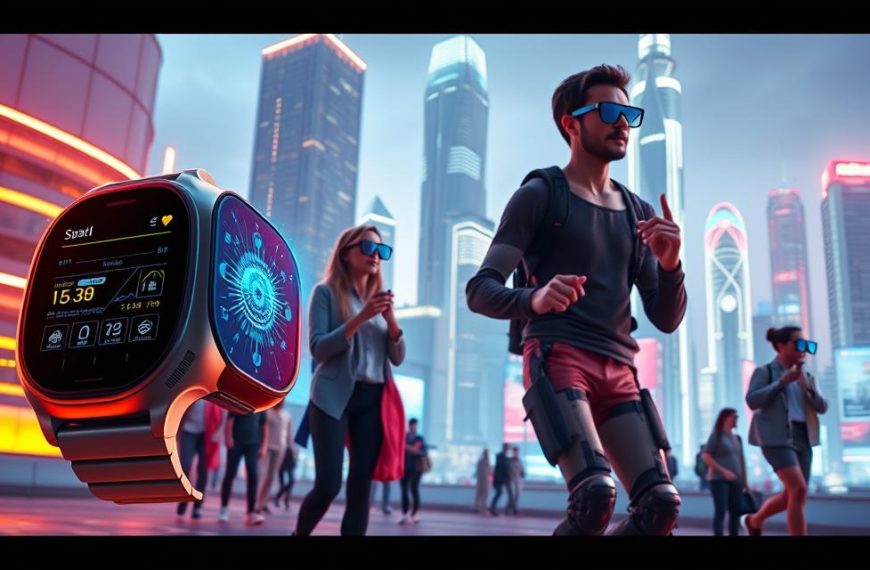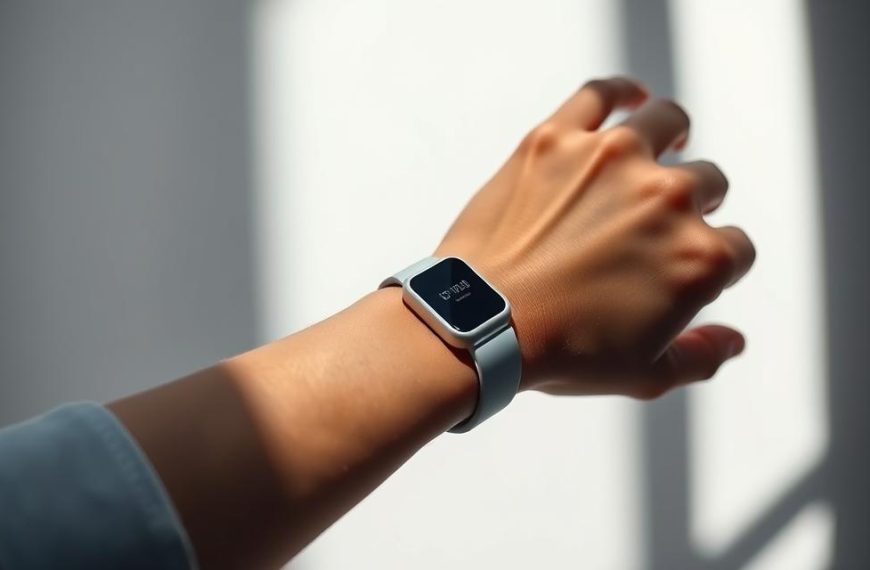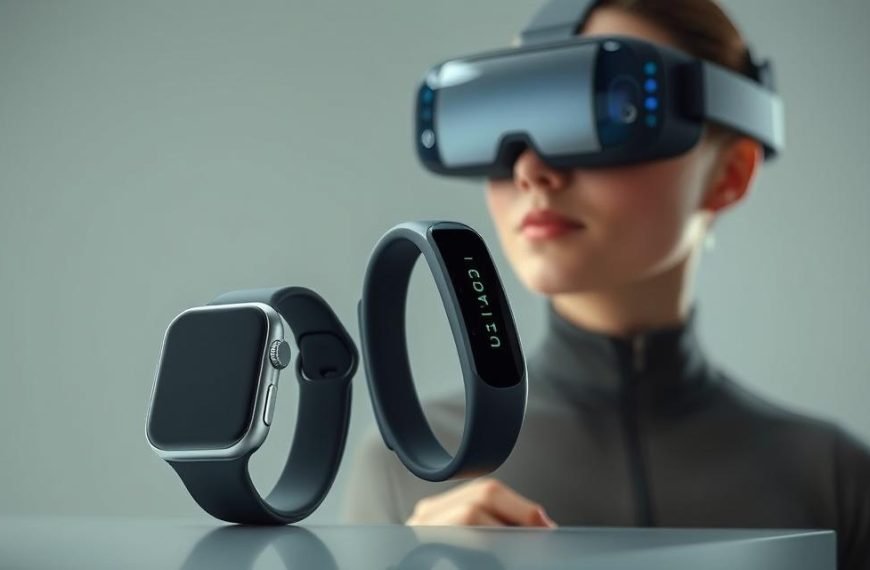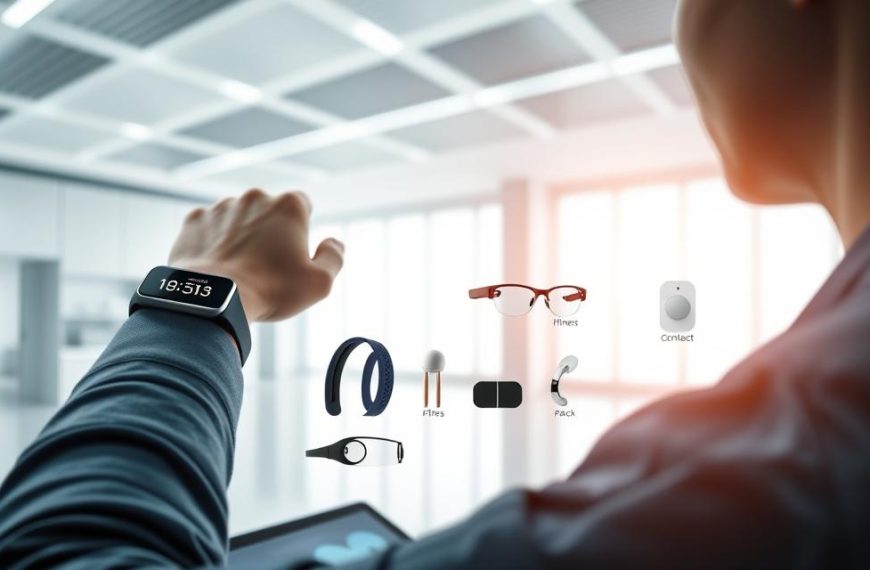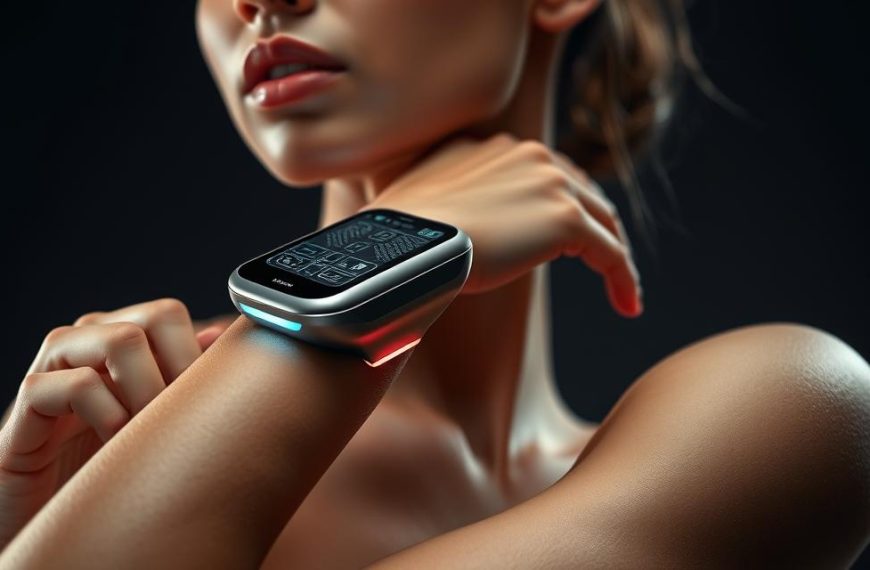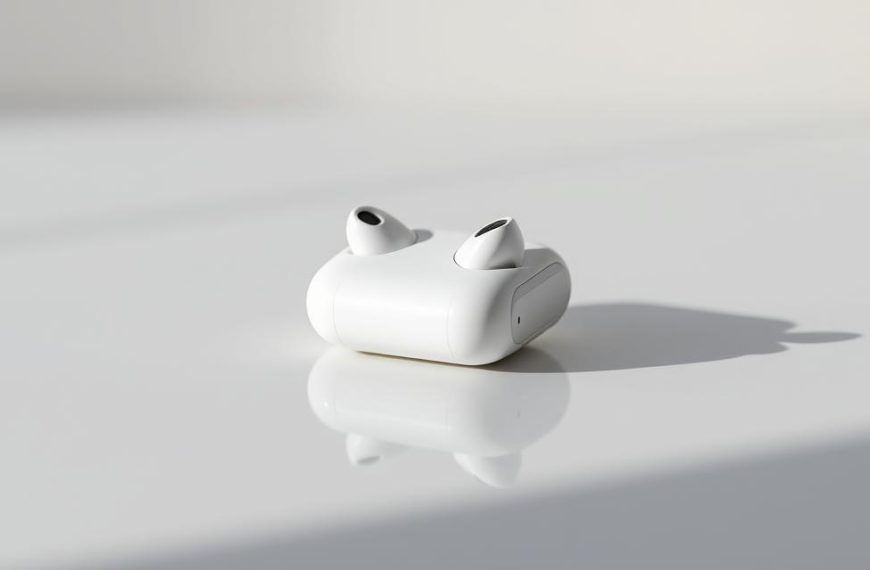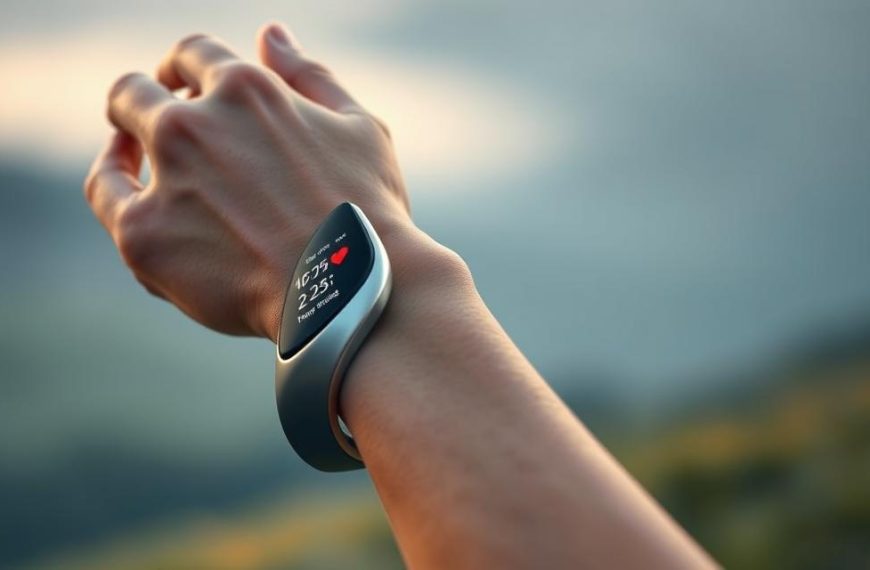Creating your own wearable technology is easier than you might think. With the rise of DIY trends, more people are exploring smart clothing and health tech. This guide is designed to help you turn your ideas into real-world prototypes.
From fitness trackers to smart jewelry, the possibilities are endless. However, challenges like battery life and component integration can be tricky. This guide will walk you through the process with practical examples and tips.
If you’re a tech enthusiast with basic electronics knowledge, this is for you. Open-source communities have shown that innovation is within reach. For more beginner tips, check out this resource.
Stay tuned for the next sections where we’ll cover the tools and materials you’ll need. Let’s get started on your journey to creating something amazing!
Introduction to Wearable Technology
The world of body-worn electronics is expanding rapidly. These devices, often referred to as wearable technology, integrate sensors and connectivity to enhance daily life. From fitness trackers to smart fabrics, they are reshaping industries and personal habits.
Primary types include smartwatches, which dominate 31% of the market, augmented reality (AR) glasses, and medical patches. These devices are designed for constant body contact, offering real-time data and convenience. For example, smartwatches now include ECG monitoring, providing critical health insights.
Emerging categories like smart fabrics and implantables are pushing boundaries. These innovations are driven by IoT expansion and miniaturization of components. However, challenges like battery disposal and rare earth metal usage raise sustainability concerns.
Ethical considerations, such as data privacy in health tracking, are also critical. Regulatory bodies like the FDA and FCC ensure compliance, but users must stay informed. For a deeper dive into the definition and applications of these devices, visit this resource.
The global market for these devices is projected to reach $186 billion by 2024. This growth reflects their increasing importance in health, fitness, and beyond. As the industry evolves, so do the opportunities for innovation and impact.
Understanding the Basics of Wearable Devices
Exploring the fundamentals of wearable devices opens doors to innovation. These devices are designed to be worn on the body, offering functionality that enhances daily life. To create effective solutions, it’s crucial to understand their core components and how they work together.
What Are Wearable Devices?
Wearable devices are electronic gadgets integrated into clothing or accessories. They collect data through sensors and process it using microcontrollers. These devices often connect to other systems via wireless protocols, enabling real-time data sharing and analysis.
Key Components of Wearable Technology
The hardware of these devices includes several critical elements. Sensors like accelerometers and heart rate monitors gather biometric and environmental data. Processing units, such as the Nordic nRF52 or ESP32, handle data analysis and device control.
Energy storage is another vital aspect. Lithium-polymer (LiPo) batteries are commonly used due to their efficiency. However, solid-state batteries are emerging as a sustainable alternative. Display technologies, like OLED screens, provide clear visuals in compact sizes.
Connectivity options include Bluetooth Low Energy (BLE), Zigbee, and LoRa. Each has tradeoffs in power consumption and range. Material choices, such as hypoallergenic silicone, ensure comfort and durability. Open-source platforms like Arduino Nano 33 BLE Sense simplify development for beginners.
Understanding these components is the first step toward designing functional and user-friendly wearable devices. By mastering the basics, you can create innovative solutions that meet real-world needs.
Planning Your Wearable Technology Project
Starting a new tech project requires careful planning and clear objectives. Whether you’re designing a fitness tracker or a medical device, defining your goals early ensures a smoother development process. This phase sets the stage for success by aligning your vision with user needs and industry standards.
Identifying Your Goals
Begin by understanding your target audience. Are you creating a device for athletes, patients, or everyday consumers? Developing a user persona helps clarify your project’s purpose. For example, a fitness tracker for athletes might prioritize durability and advanced metrics, while a medical device focuses on accuracy and compliance.
Consider the average development timeline, which ranges from 6 to 18 months. Medical devices often require FDA Class II certification, adding extra steps to the process. Defining these goals early helps avoid delays and ensures your device meets regulatory standards.
Choosing the Right Features
Feature selection is critical to your device’s success. Use a prioritization matrix, such as the MoSCoW method, to categorize features into must-haves, should-haves, could-haves, and won’t-haves. This approach ensures you focus on what truly matters.
Power consumption is another key factor. Wrist-worn devices typically operate on a power budget of less than 500mW. Battery life calculations, based on mAh and usage patterns, help optimize performance. Waterproofing standards like IP67 or IP68 may also be necessary, depending on your device’s use case.
| Consideration | Details |
|---|---|
| User Persona | Athlete, patient, or consumer |
| Feature Prioritization | MoSCoW method |
| Compliance | FCC Part 15B, IEC 60601 |
| Waterproofing | IP67 vs IP68 |
| Battery Life | mAh vs usage patterns |
Prototyping costs can range from $5,000 to $50,000, depending on complexity. Risk assessments, such as thermal management and RF exposure, are also essential. Finally, decide between open-source and proprietary software to align with your development strategy.
Designing Your Wearable Device
Crafting a device that fits seamlessly into daily life requires thoughtful planning. A successful design balances functionality, comfort, and aesthetics. Whether it’s a fitness tracker or a smart accessory, the goal is to create something users will love to wear.
Creating a User-Friendly Design
Ergonomics play a key role in ensuring a device feels natural on the body. For wrist-worn gadgets, keeping the weight under 50 grams is ideal. Buttons should be at least 12mm in size for easy use, while thermal limits must stay below 41°C to prevent discomfort.
Human factors engineering helps optimize usability. For example, a modular design allows for future upgrades, while failure mode analysis ensures durability. These considerations make the device intuitive and reliable for everyday use.
Selecting Materials and Components
Choosing the right materials is crucial for both performance and comfort. TPU and resin are popular choices for 3D printing due to their flexibility and durability. Biocompatibility testing, following ISO 10993 standards, ensures safety for prolonged skin contact.
Environmental sealing techniques, like conformal coating, protect components from moisture and dust. Aesthetic factors, such as colorfastness and texture, also influence user perception. Sourcing components from trusted suppliers like DigiKey ensures quality and reliability.
| Consideration | Details |
|---|---|
| Ergonomics | |
| Thermal Limits | Max 41°C skin contact |
| Materials | TPU, resin, biocompatible options |
| Environmental Sealing | Conformal coating techniques |
| Aesthetics | Colorfastness, texture |
Building Your Wearable Technology
Bringing your innovative ideas to life involves both creativity and technical precision. The process of assembling hardware and integrating software is critical to creating a functional and reliable device. This section will guide you through the essential steps to ensure your project succeeds.
Assembling the Hardware
Proper assembly of hardware ensures your device operates efficiently. Start with soldering, keeping temperatures below 300°C for flex PCBs to avoid damage. Sensor fusion techniques, such as combining accelerometer and gyroscope data, enhance accuracy.
Power profiling tools like Joulescope help optimize energy consumption. EMI mitigation strategies, such as using ground planes and ferrites, reduce interference. Debugging tools like Segger J-Link EDU simplify troubleshooting during assembly.
Integrating Software
Effective software integration is key to a seamless user experience. Choose between C++ and MicroPython for firmware development, depending on your project’s complexity. Over-the-air (OTA) updates require at least 128KB of flash memory for smooth operation.
Bluetooth stack configuration, including GATT services, ensures reliable connectivity. Machine learning integration with TensorFlow Lite adds advanced functionality. Companion apps developed using React Native enhance user interaction.
| Component | Details |
|---|---|
| Soldering | Max 300°C for flex PCBs |
| Power Profiling | Joulescope for energy optimization |
| Bluetooth Stack | GATT services for connectivity |
| Machine Learning | TensorFlow Lite integration |
| Version Control | Git for hardware teams |
“The synergy between hardware and software defines the success of any modern gadget.”
Testing and Validating Your Wearable Device
Ensuring your device performs reliably under real-world conditions is critical. Rigorous testing and validation processes help identify potential issues before launch. This phase ensures both functionality and user safety, building trust in your product.
Conducting Functional Tests
Functional tests evaluate the device’s performance under various conditions. Accelerated life testing, such as 50,000 bend cycles, simulates long-term use. Environmental tests expose the device to temperatures ranging from -20°C to 60°C to ensure durability.
Battery cycle testing verifies that the device can withstand 500+ charge cycles without degradation. Drop tests from a height of 1.5 meters onto concrete assess impact resistance. These tests ensure the device meets real-world demands.
Ensuring User Safety
User safety is a top priority in device development. Specific Absorption Rate (SAR) limits, set at 1.6W/kg by the FCC, ensure safe RF exposure. Water ingress testing, submerging the device at 1 meter for 30 minutes, confirms waterproofing.
Clinical validation is essential for medical devices, ensuring accuracy and reliability. Usability testing with a cohort of 50+ participants provides insights into user experience. Cross-section microscopy helps analyze failures and improve design.
| Test Type | Details |
|---|---|
| Accelerated Life Testing | 50,000 bend cycles |
| Environmental Testing | -20°C to 60°C |
| Battery Cycle Testing | 500+ charge cycles |
| Drop Test | 1.5m onto concrete |
| SAR Limits | 1.6W/kg (FCC) |
| Water Ingress Testing | 1m/30min submersion |
Compliance documentation and RF certification pre-compliance are essential for market readiness. Regression testing automation ensures updates don’t introduce new issues. These steps guarantee a safe, reliable, and market-ready product.
Launching Your Wearable Technology Product
Bringing your wearable product to market requires careful planning and execution. This phase ensures your device meets user expectations and regulatory standards. From crowdfunding strategies to post-launch support, every detail matters.
Preparing for Market
Start by completing at least 30% of your prototype before launching a crowdfunding campaign. Tiered rewards, such as early access or exclusive features, can attract backers. Retail packaging should focus on creating a memorable unboxing experience.
Ensure your product complies with CE marking, which typically takes 6-8 weeks. Over-the-air (OTA) update infrastructure is essential for delivering firmware improvements post-launch. Establish customer support channels, including live chat and email, to address user concerns promptly.
Gathering User Feedback
Analytics integration helps track usage patterns and identify areas for improvement. A/B testing firmware features allows you to refine functionality based on user preferences. Burn-in testing prevents recalls by ensuring long-term reliability.
Lifecycle management ensures your product remains relevant through updates and upgrades. Post-market surveillance helps monitor performance and address any emerging issues. This feedback loop is critical for maintaining user trust and satisfaction.
“A successful launch is not just about the product—it’s about the experience you create for your users.”
Conclusion
The journey from concept to market-ready devices is both challenging and rewarding. From initial planning to final testing, each step in your project plays a vital role in ensuring success. Emerging trends like graphene batteries and LEO satellite IoT are pushing the boundaries of what’s possible in this field.
Community resources such as Hackaday and Wearables Europe offer valuable insights and support for innovators. Ethical manufacturing practices and a philosophy of continuous iteration are essential for long-term sustainability. Always prioritize safety, ensuring your device meets all regulatory standards.
Share your creations with the world and inspire others to innovate. By 2030, adoption rates for these devices are predicted to reach 60%, transforming how we interact with technology. This guide is just the beginning—your creativity and dedication will shape the future of wearable technology.






